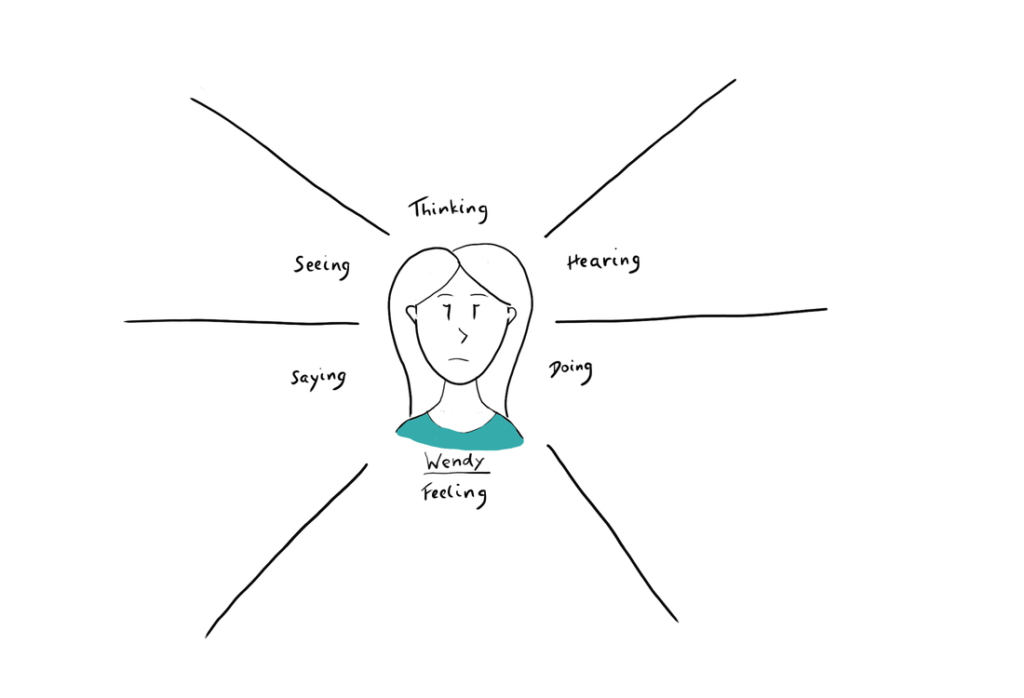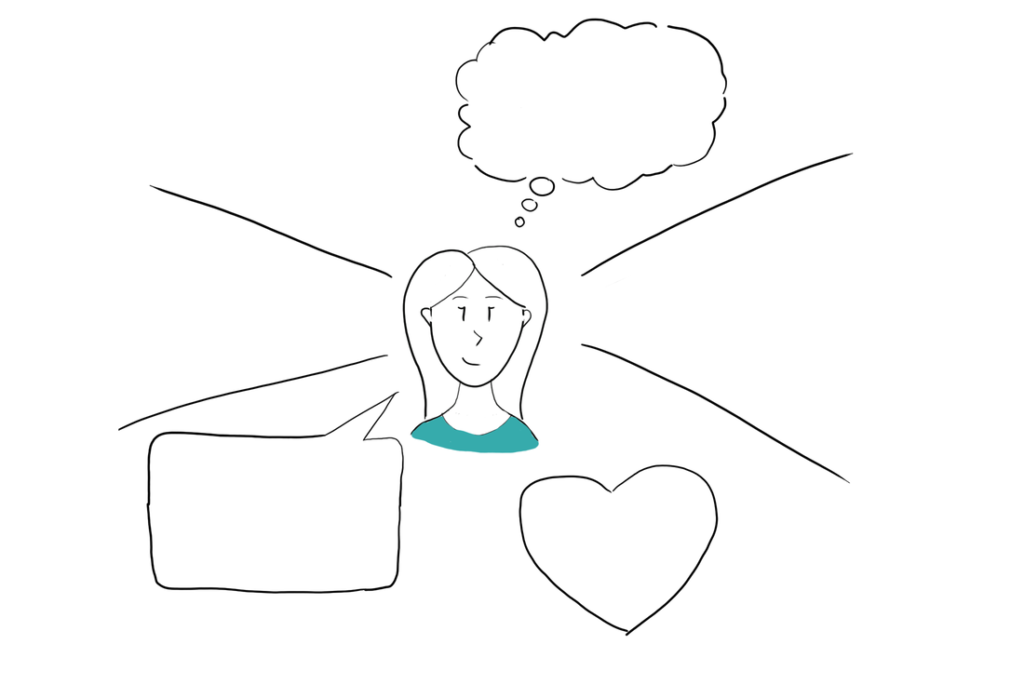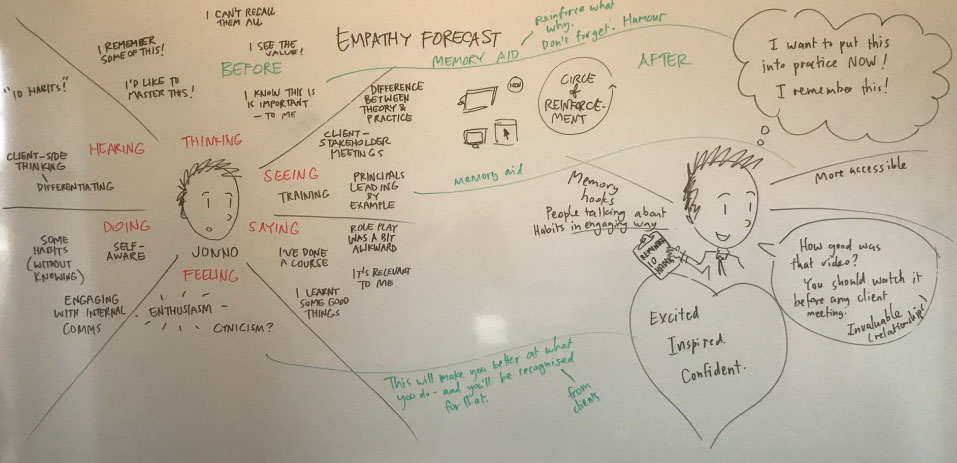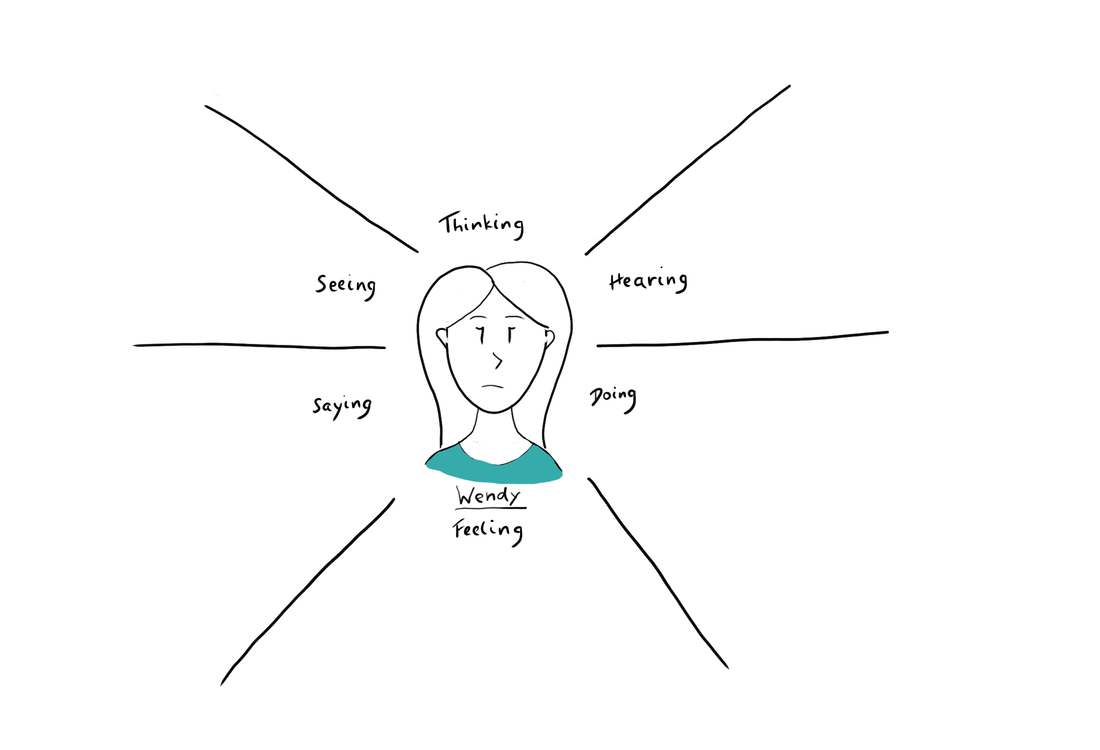At Sketch Group we’ve found the Empathy Forecast activity to be useful for years—it forms the foundation of all our sketch videos. It’s an easy group activity to run, and delivers valuable insights and targeted, useful language to use in website copy, presentations, sales material, or video call-to-action.
It’s also a wonderful way of getting clients, stakeholders, and team members collaborating, contributing, and thinking about a product or service from the target audience’s perspective.
While the empathy map activity was originally developed by Dave Gray from XPLANE, the process of forecasting lets us capture a snapshot of where your target audience is at before a project, and then encourages the group to envision what is possible afterwards. Participants are then encouraged to find language that will bridge the gap between states, and bring about the desired change or impact.
In this way, you can explicitly encourage the group to ponder the potential for what is necessary to make your project a roaring success.
How to run an Empathy Forecast
Here are the steps to follow when facilitating an Empathy Forecast activity of your own, which can be done either in-person, or online using collaboration software like Mural or Miro.
Step 1. Run an empathy map for the Before state.
We use the following diagram for participants to fill in, using markers and sticky notes. It helps to get specific about your target audience—for example, you could ask the group if they have an actual person in mind, and then caricature that person for the activity, like we’ve done here with “Wendy”! Once you have a particular person in mind, start brainstorming together what you imagine they might be thinking, feeling, hearing, saying, doing and seeing.

Step 2. Run another empathy map for the After state.
At this stage, we draw the map a bit differently, and take control of the whiteboard markers to capture the groups thoughts and succinct phrases. We like to draw Wendy with a smile for this phase, as we imagine the positive impact our product or service will have on her. Go ahead and do the same for your target user, and envision what is possible afterwards.

Step 3. Connect the dots between Before and After.
Now ask the group “What does this person need to hear to get them from the Before state to the After state?” and write the answers along the connecting lines. The answer to this question for each section will provide you with invaluable phrases to use in your marketing or sales efforts.That’s it! Once you’ve connected each Before and After section, photograph the completed Empathy Forecast, and share the images with participants after the meeting.

There may be quite a lot of detail, so be sure to include close-ups of each section.While this is no substitute for real data on how and what your target audiences think, feel, see, say, hear and do, an Empathy Forecast is a powerful tool for:
- creating targeted messaging and key phrases that are more likely to resonate with your target audience
- creating buy-in amongst clients and stakeholders
- narrowing the scope of a project
- giving your group or team the opportunity to participate in something that is fun and creative
- building empathy amongst participants for the target audience

Go forth and forecast
The empathy forecast really is a powerful tool, regardless of the type of communication problem you’re trying to solve, the industry you’re in, or the audience you’re trying to reach.
If you found this article useful and would like to receive other useful tips on how visual thinking can supercharge how you think, communicate, and collaborate, be sure to sign up to our (semi) regular email newsletter, Feelin’ Sketchy.


